-
Car Reviews
- All reviews
- Midsize SUVs
- Small cars
- Utes
- Small SUVs
- Large SUVs
- Large cars
- Sports SUVs
- Sports cars
- Vans
Latest reviews
- Car News
-
Car Comparisons
Latest comparisons
- Chasing Deals
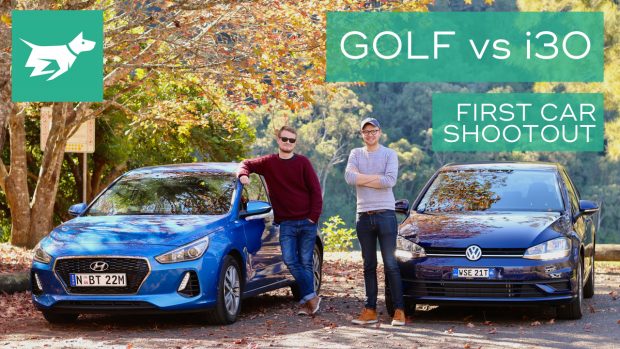
First cars, purchased brand new, are increasingly big-business in Australia. New cars are cheaper than they’ve ever been, Australians are comparatively better off than ever, and gone are the days where a first car had to be ancient in order to be affordable. Thanks to the progression of automotive technologies, the cars being considered by many parents of kids who’ve just gotten their licence are modern, better equipped and, crucially, safer than ever. And, with many popular first car choices also enjoying strong resale values, it often makes sense to buy a brand new car, considering that you know how it’s been run and looked after. With that in mind, which one our favourite small cars, the Volkswagen Golf and Hyundai i30, fares best as a first car, or as a runabout hatch?
We’re testing the entry-level variants that will please parental bank accounts: the i30 Active and Golf 110TSI. Both models hover around the $25,000 mark, and whilst you can go lower in the i30 range with the new i30 Go model, the Golf 110TSI is the entry level to the German manufacturer’s iconic small car. Considering that the amount of drivers learning manual is, sadly, at its lowest point yet, we’ve focused on the automatic variants to compare.
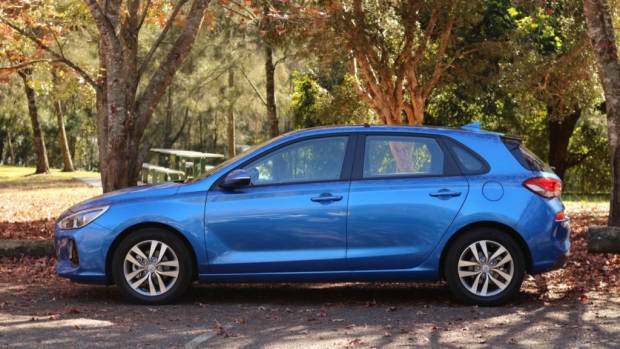
Both models are extremely popular – you see plenty wearing P-plates around metropolitan Sydney – and are very easy to drive, thanks to their nimble handling, good visibility, and sensible levels of power and torque. Both the i30 and Golf are safe as well, thanks to the inclusion of seven airbags, anti-lock brakes, stability control and, in the case of the Golf, autonomous emergency braking that will stop the car automatically if eyes have been taken off the road and an obstacle rapidly appears – something parents will love the sound of. However, the devil is in the detail, so let’s see what comes out on top in our battle of the first cars.
Both the i30 Active and the Golf 110TSI are relatively new cars. This most recent i30 launched as an entirely new generation in early 2017, while the Golf received a substantial mid-life upgrade, with the revised model labelled the Mk 7.5 Golf, later on in the year.
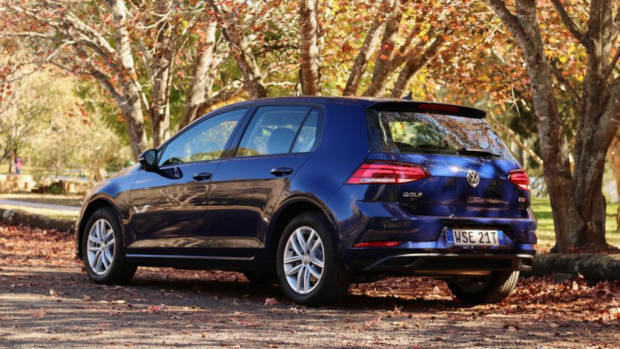
Many readers will remember a recent past in which European cars were more expensive and equipped much more sparsely than their Korean competition. It may surprise you that those days are essentially over – the era of the underequipped Golf has ended. However, so too have the days where European necessarily meant better-to-drive. Today’s Korean cars compete right at the top of the segment, and the new i30 is one of the best Hyundais ever made.
The Golf starts at an attractive $23,990 for a six-speed manual but the vast majority of sales will be of the seven-speed DSG automatic gearbox. The most basic Golf with an auto is the $26,490 (plus on-road costs) 110TSI as tested here. The base model not only receives autonomous emergency braking as standard, but also seven airbags, 16-inch alloy wheels, 8-inch touchscreen infotainment system with Apple CarPlay and Android Auto smartphone mirroring, a reversing camera, an eight-speaker sound system with above average sound quality, a rear foglamp, LED daytime running lights and tailights, auto-off headlights, a leather-wrapped steering wheel and an electric handbrake with auto hold functionality. The only option available on the 110TSI is $500 metallic paint. Sophisticated options promising higher levels of convenience and automated safety systems are restricted to higher-up Golfs, starting with the next-level Trendline ($24,990 manual, $27,490 automatic).
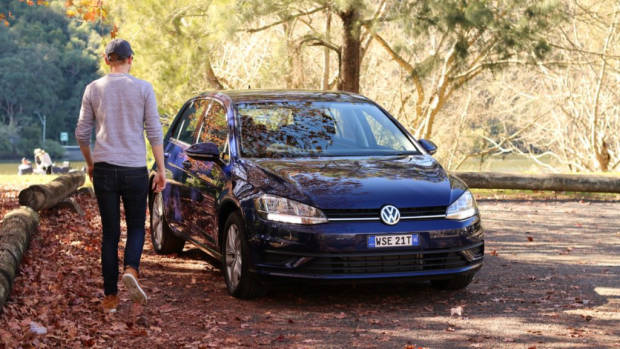
Over at Hyundai, sadly, the days of an automatic i30 for $19,990 driveaway are dead and gone. The new i30 has moved upmarket, with the Active model with a six-speed automatic asking $23,250 (plus on-road costs). However, generous equipment levels justify that cost – the i30 Active includes big-ticket items like an 8-inch touchscreen with integrated satellite navigation, live traffic updates, and a DAB+ digital radio. There are rear parking sensors, automatic projector headlights, a rear centre armrest with cupholders and auto-folding mirrors. It also features LED daytime running lights, rear foglamps, and 16-inch alloy wheels.
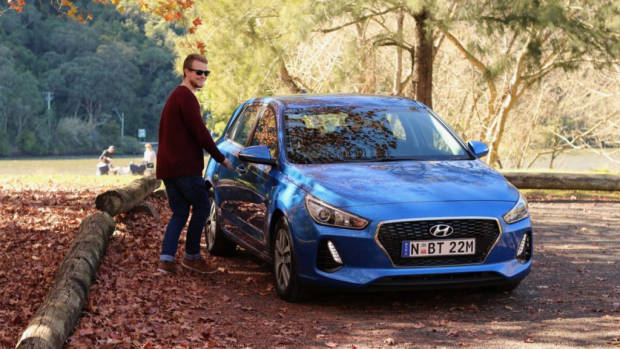
On paper, then, the i30 looks to have the Volkswagen beat on outright features, but the Golf counters some of the Hyundai’s onslaught with the sort of detailed premium touches that have long made the Golf feel like a much more substantial car. For example, the Volkswagen has a much-nicer-to-hold leather steering wheel and gear shifter as standard – in place of the Hyundai’s cheap-nasty plastic set. The Golf also has four automatic windows, heated mirrors, luminescent dials, and the ability to lower the windows remotely from the key – perfect for hot days in the Australian summer.
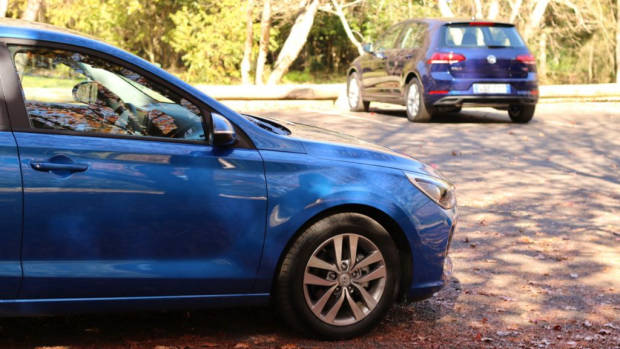
The i30 Active also gives up ground needlessly in leaving autonomous emergency braking off the standard equipment list. We think this technology is a great tool for young drivers, but it’s presently unavailable on the base model Hyundai – it will arrive as an option in February, as part of a $1,500 safety package. When you consider that the package will also option in radar cruise control and blind spot monitoring, the price seems like a good idea for parents looking to cosset their kids with the latest safety advances. It’s also worth noting again that the base Golf commendably has AEB as standard, but if you want technologies like adaptive cruise control and blind spot monitoring on the Volkswagen, you have to step up to the Trendline model which allows them to be optioned in.
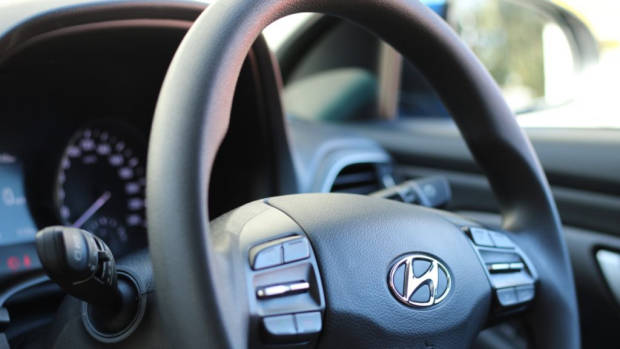
In fairness, the i30 Active costs $3,240 less to buy in the first place than the Volkswagen Golf, so we can’t expect quite as much of it out of the box. That said, Volkswagen have been offering sharp $26,490 driveaway pricing for the Golf 110TSI DSG, though this isn’t expected to last into the new year. After this point, the driveaway price will be almost $31,000 before negotations – a far bigger ask. Add in the fact that the Hyundai is very cheap to service, with each of the first three years averaging just $259 in servicing in the i30 versus $402 in the Golf, and the i30 strikes an early value lead.
The i30’s driving experience is solid and pleasant, with well weighted controls and a 2.0-litre engine and six-speed auto combo that, while it doesn’t set the world alight, is more than adequate for town or country use. The Active produces 120kW of power and 203Nm of torque and, when you’re on it, it feels peppy despite a thrashy engine note. A downside of this relatively old-fashioned 2.0-litre GDi engine is its high fuel consumption – we recorded a high average of close to 11L/100km in town, and highway driving only reduced this to 7.6L/100km. Considering that the car’s combined fuel consumption is rated at 7.4L/100km, this is no shock – this figure is high, as is the car’s 173g/km CO2 emissions rating.
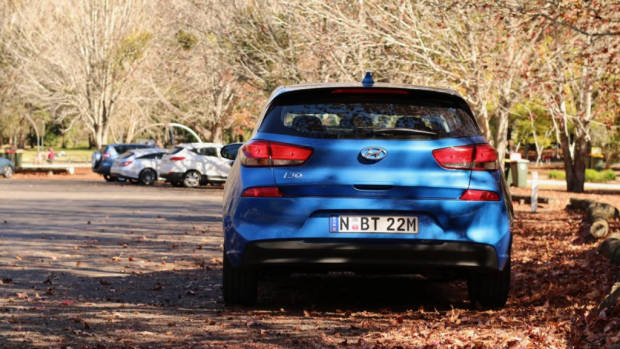
Piloting the i30 is pleasant, however. Like all Australian-delivered Hyundai products, the i30 has undergone substantial local tuning and adjustment to make the car drive more suitably on Australian roads, taking into account the bumps, undulations and poor road surfaces common in this country. All i30 models, aside from the sporty SR and N grades, feature a torsion beam rear suspension setup. Those sports-focussed models have a fully independent rear suspension, which unlocks appreciably better handling. The i30 Active’s suspension does a good job of ironing out bumps, though some harsher lower-speed conditions can catch the rear suspension out.
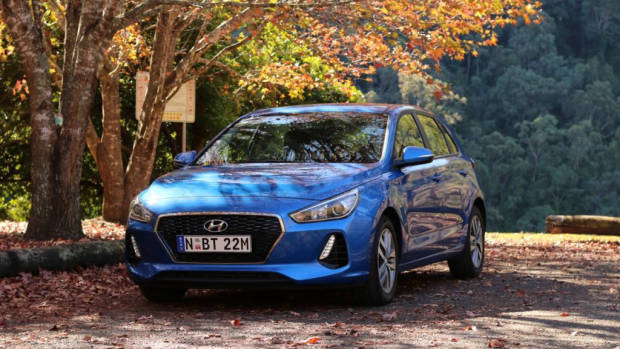
The i30’s steering has also been tuned for Australian tastes, and it features a slightly slower rack than the Golf. This makes the steering feel heavier at all speeds, though around town it lightens up nicely to help make parking a breeze. The i30’s different driving modes also alter its steering weight – the sport mode makes it heavier and the eco mode lighter, though neither add any feel to the system.
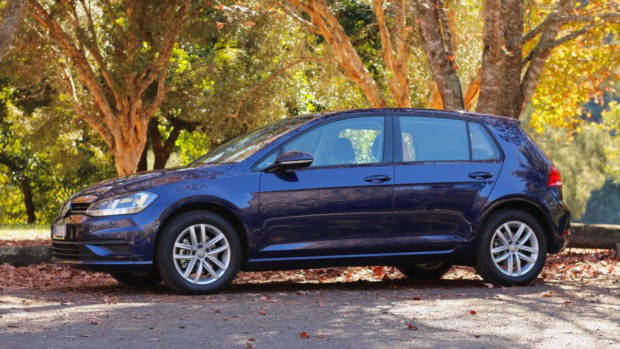
However, swapping into the Volkswagen Golf adds even more justification to its higher asking price. The Golf’s more modern engine is much less vocal; the steering is more linear; and overall, the driving experience is borderline-luxurious, and one that is much more relaxing that the i30. The engine in particular is a peach: it’s a turbocharged 1.4-litre unit that makes 110kW of power and 250Nm of torque, and unlike the i30, both of those figures are produced low in the rev range. This means that there’s no need to punch the throttle around town as the Golf’s ample torque is right there for drivers to access. Yet, when you are on the throttle, it feels genuinely brisk, and in the old days, it would have been considered a moderately hot hatch – its official 0-100km/h time of 8.2 seconds proves this.
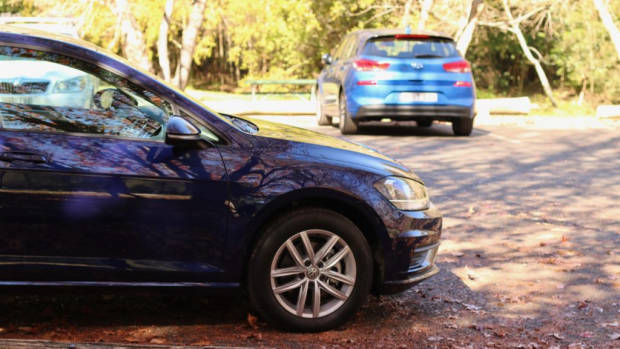
But of course, first cars aren’t about performance; frugality is more important, and the Golf scores high points for fuel economy. Not only is its consumption noticeably decreased compared to the i30 – our 6.6L/100km score in town is barely half that of the Hyundai, while the low 5L/100km range on the highway is equally impressive – the Volkswagen’s CO2 emissions of 128g/km are almost fifty per cent fewer than the i30. Clearly, Hyundai needs to work on importing more sophisticated engines for its lower-end i30 models in Australia. We believe they should replace the 2.0-litre GDi with the Golf-like 1.4-litre turbo offered on European-delivered i30s.
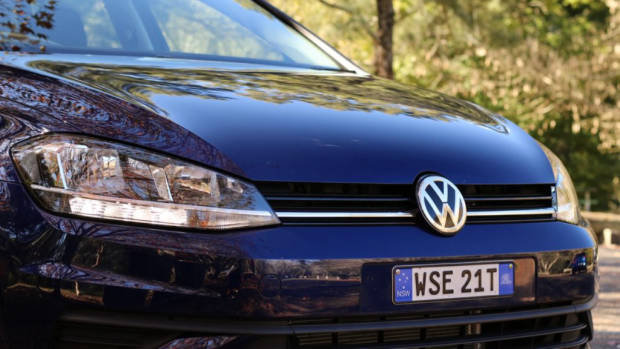
The Golf isn’t perfect to drive, though. One area that needs further attention is the DSG dual-clutch automatic transmission. On the move it changes gears quickly, but starting off the line can be slow thanks to a combination of indecisiveness from the gearbox, and a keenness to upshift into second gear almost immediately, which slows initial progress. That said, it’s possible to master the quirks of the DSG quickly, and once you’re moving this gearbox is intuitive, and genuinely helps to save fuel by shifting into high gears quickly… while the Sport mode is good for back-road runs.
As we said, though, the devil is in the detail. While the i30 is better value on paper, the additional expense in buying a Golf is justified when you step inside. The i30’s cabin isn’t bad, but its perceived quality hasn’t changed since the old model, and whilst the Golf’s quality is actually slightly inferior to old Mk 6 shape it replaced, it’s still noticeably superior to the Hyundai.
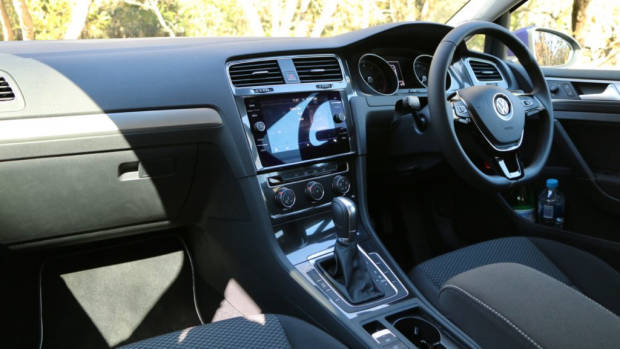
The Volkswagen Golf 110TSI’s cabin.
All of the Golf’s materials, from the soft leather steering wheel to the precise weighting of the controls, the flock-lined door bins, the softness and grain of the dashboard plastics and even the slick operation of the stalks – these all feel like quality items from the price class above.
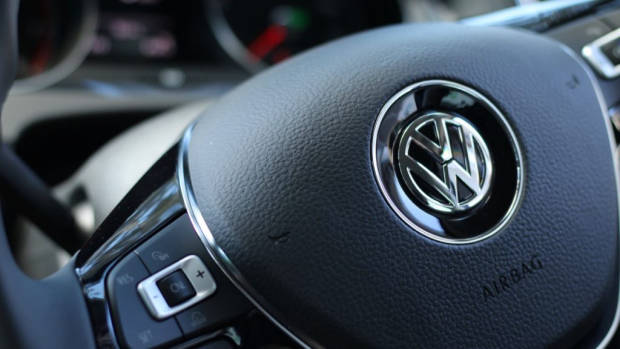
Details like high-grade materials help to make the Golf feel like a more expensive car.
The Volkswagen bests the Hyundai on first impressions, but in many ways, the i30’s interior is a great place to spend time. It’s a very ergonomic space: all the controls are easy to use and understand. In particular, the i30’s infotainment system is great. The menus are attractive and simple to use, and the six-speaker sound system offers good sound quality as well.
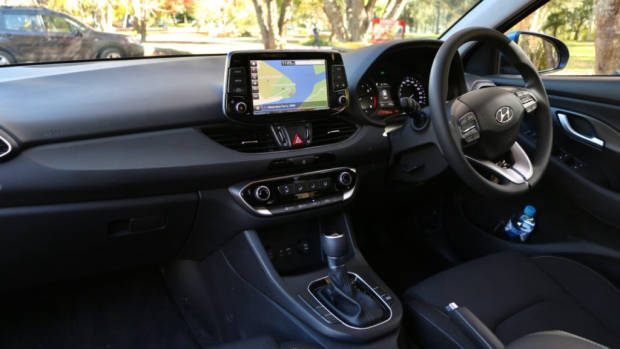
The Hyundai i30’s cabin.
The layout of the i30’s cabin is more ergonomically pleasing than the Golf’s – whilst the positioning of the high-set, tablet-like touchscreen may be controversial, it stops drivers from taking their eyes too far off the road because it’s mounted high on the dashboard, close to the driver’s line of sight.
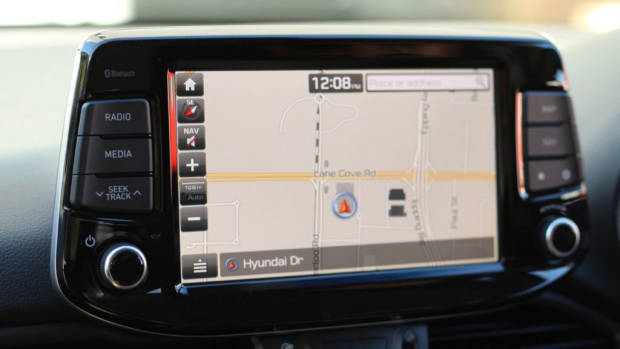
The Hyundai’s high-set touchscreen is an ergonomic highlight of the i30.
It’s a better situation than in the Golf, whose touchscreen is mounted considerably lower in the car. However, the Volkswagen’s glass-fronted eight-inch system looks more premium and is nicer to actually interact with. Whilst it can get dirty from fingerprints, it is noticeably quicker to use and the inclusion of CarPlay and Android Auto means that it’s very up-to-date system and can be updated as time goes on.
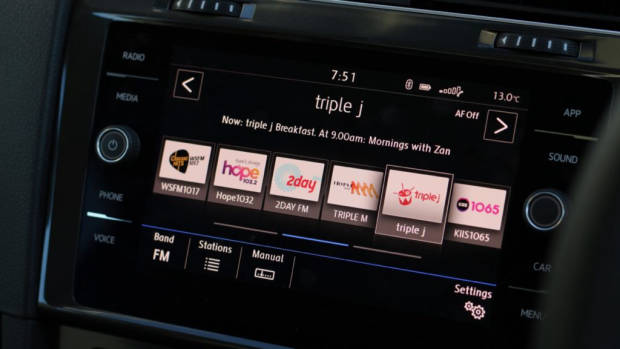
The Golf’s lower-set, glass-fronted touchscreen.
The smartphone tech also masks the lack of integrated sat-nav, and the inclusion of live traffic on Apple or Google Maps makes it superior to the nav system that exists in upper Golf models.
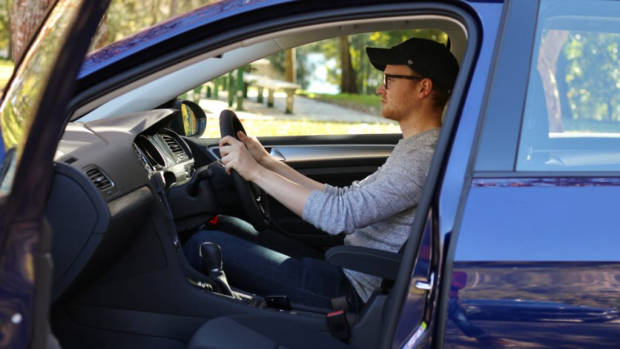
The Golf’s driving position.
Where both models could improve is their seats. Both these cars are base models with base model-esque seat comfort. Both the i30 Active and the Golf 110TSI feature seats that are too flat and lack any sort of lumbar adjustment, so they grow uncomfortable on long trips. In the Golf, you have to step all the way up to the expensive $28,990 Comfortline before you unlock a significantly better seat; it’s a similar story in the i30 range, where the $28,950 Elite or SR models have a more supportive seat.
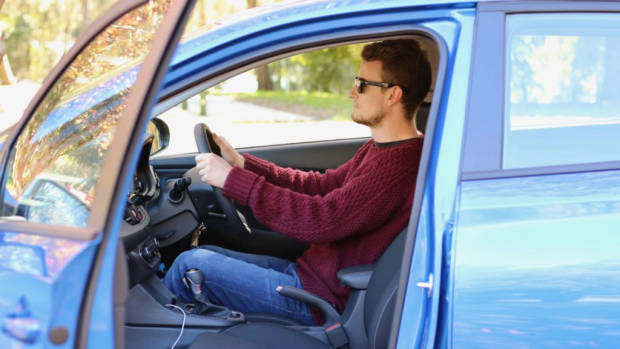
The i30’s driving position.
Flatness aside, though, the driving position of both the Golf and i30 is better than almost any rival. Noise levels in the cabin, too, are hushed, especially because of the small 16-inch wheels that feature on these base models.
While the i30 and Golf drive very differently, their practicality is very similar. Undoubtedly, Hyundai targeted the Golf closely while developing this new i30. Neither car has the biggest boot in class, but they are right-sized, nice and square, and feature clever touches to help owners easily transport cargo.
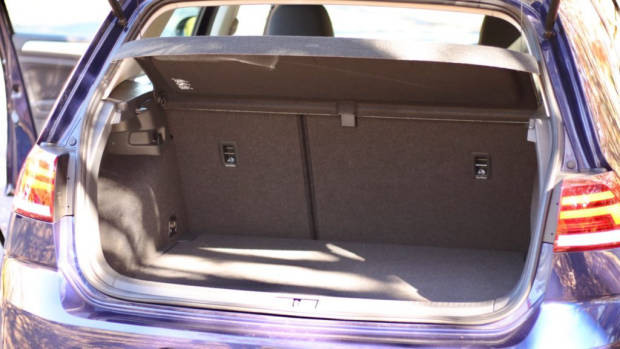
The Golf’s 380 litre boot.
The Golf’s boot measures in at 380 litres with the seats up, and 1,270 litres with the back row folded. That’s slightly less than the i30’s 395 litres / 1,301 litres. Both cars feature useful shopping bag hooks and storage on either side, though the Golf is unique in offering an adjustable dual-level boot floor and the ability to fold the rear seats truly flat, helping to slide heavy items like flat-pack furniture right to the front easily. That said, higher-specification i30s do have this feature; the Active misses out.
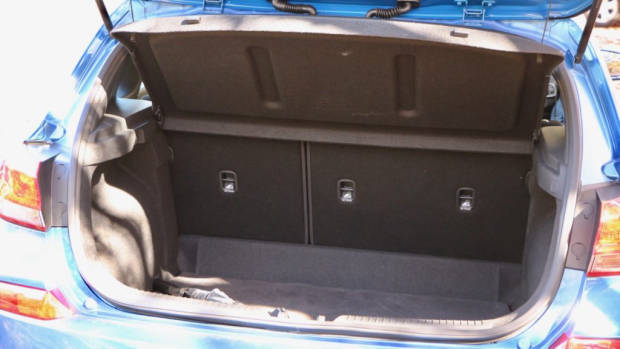
The i30’s 395 litre boot.
Both the i30 and Golf feature roomy rear seats, with a well-shaped base, and more than enough leg, foot and headroom for even tall occupants. The i30 features a centre rear armrest with cupholders – the Golf does not at this level – plus the map pockets and reasonable door pockets mirrored by the Volkswagen. Critically, for carrying friends, the Golf one-ups the i30 by offering rear air conditioning vents as standard, even at the base model level. Plus, the Volkswagen’s four door pockets are each lined with felt to prevent items from rattling around noisily on the move – another nice little touch.
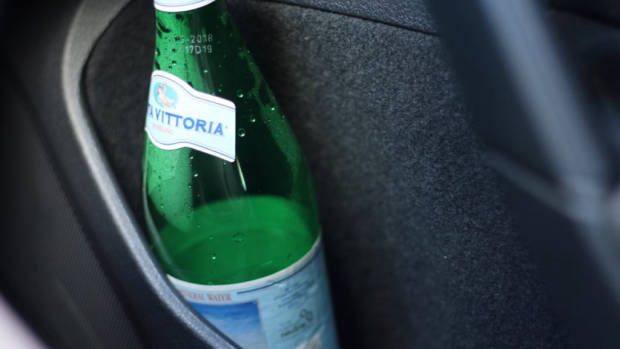
One of the Golf’s thoughtful touches: felt-lined door pockets.
The front seat of both is also quite practical, with storage spots everywhere in their cabins. Both have good sized door bins (though the Golf’s is flock-lined, like the rear seat), decent cupholders (though the electric hand brake of the Golf allows it to better use the available centre console space, as upper spec i30 automatics do as well), large gloveboxes, big storage spots underneath the centre armrest and phone trays underneath the climate controls, though the Golf’s is hard to reach in dark spots.
While we’ve unearthed plenty of meaningful differences between the Hyundai i30 Active and the Volkswagen Golf 110TSI in this twin-test, what’s clear is that these two cars are both highly accomplished – in fact, we rate than as the top two choices in the first car class.
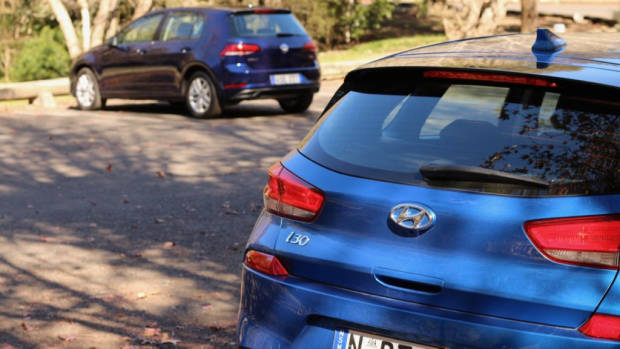
Not only do the i30 and Golf represent good value for money, but they both present a level of talent not often seen in rival small cars. That’s found in the way the interiors are presented, the way the cars handle and drive, and their relatively compromise-free nature.
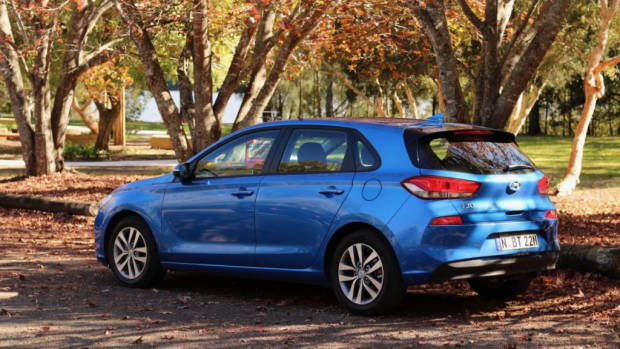
The i30 offers a long equipment list and cheap ownership costs, and it drives reasonably well as well. However, while the Golf costs more to buy in the first place, and to service later, it is a superior car at this level. Its driving experience is more luxurious and quiet than the i30, its engine is significantly more efficient, yet also quieter and punchier.
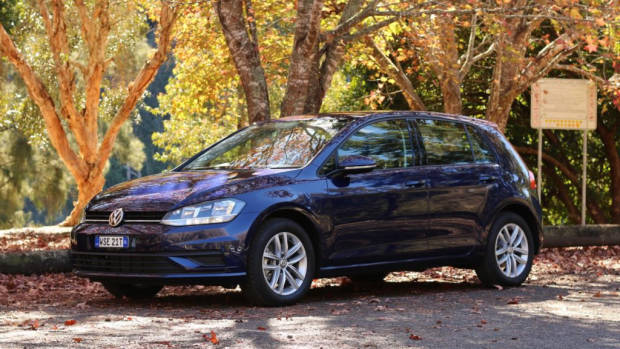
While the Golf may not offer some features at base level, it does crucially include automatic emergency braking – a big plus for any driver, let alone inexperienced first drivers. Add to that a quality and practical interior, and it’s a conclusive win for the Golf.
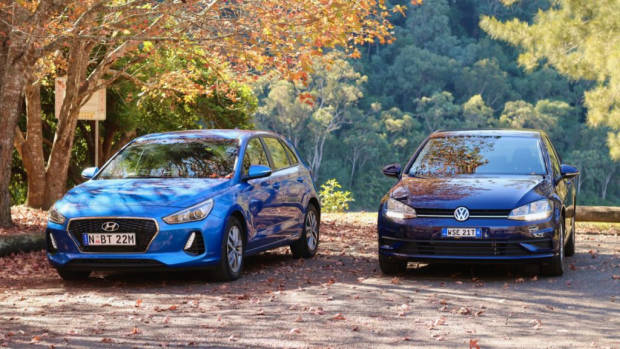
Latest comparisons
About Chasing cars
Chasing Cars reviews are 100% independent.
Because we are powered by Budget Direct Insurance, we don’t receive advertising or sales revenue from car manufacturers.
We’re truly independent – giving you Australia’s best car reviews.